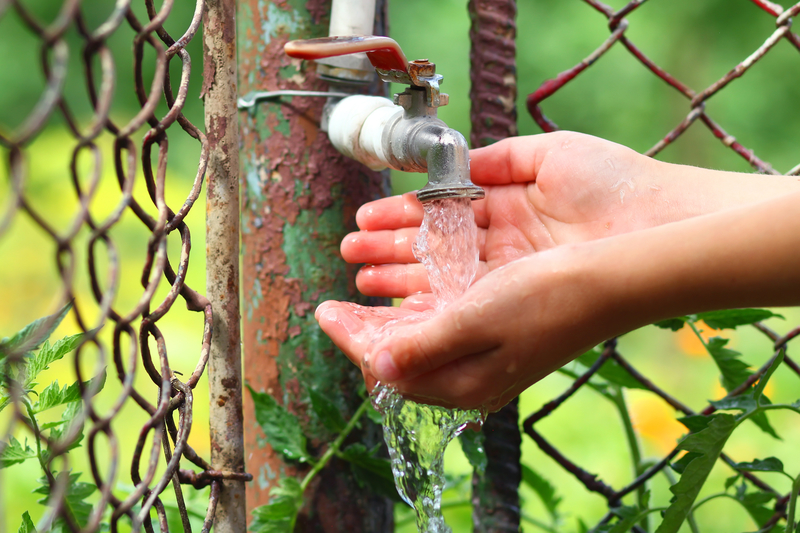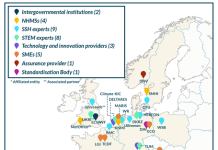Acute shortage of drinking water reserves across the globe is one of the biggest problems these days. According to the study conducted by NASA in cooperation with the University of California on the underground natural reservoirs of water for the period of 2003-2013, the water supplies in underground aquifers are rapidly shrinking. Just over 30 percent (13 out of 37) of the largest underground water reservoirs are drying up at the moment. The fact that 35 percent of the world’s drinking water comes from these underground sources means the situation could be described as critical.
According to the Agency for Regulation of Natural Monopolies, the groundwater reserves of Kazakhstan are estimated at 19 billion cubic meters, with an annual intake of water around 1.4 billion cubic meters. Providing the population of all regions with high-quality drinking water is one of the most urgent and difficult problems for the ecological security of Kazakhstan. According to the Ministry of Health of the Republic of Kazakhstan, the current state of sewerage systems resulted in a lack of sanitary and epidemiological welfare of the country’s population. Thus, the quality of water from the 1 category open reservoirs used for centralised water supply in Kazakhstan declined on chemical indicators compared to 2009. Out of 1,989 water samples, 151 (7.6%) did not meet the standards of microbiological indicators – 4.5%.
The problem with drinking water purification is that it requires the joint efforts of industry, scientists and government together. There are a number of government programs aimed at addressing the problem.
Thus, in the years 2002-2010 the “Drinking Water” industry program was launched by the government to provide settlements with reserves of drinking water. In 2011, the Ministry of Economic Development and Trade has planned an industry program called “Ak Bulak” to ensure settlements with drinking water for the years 2011-2020. The state programs developers indicate that one of the most affordable and effective ways to improve the quality of water is the use of individual purifications, mobile and stationary water purification filters. Thus, the Interdisciplinary Research Complex was established in 2006 at the University, and since 2010 has been working with the Intergovernmental Organization “Joint Institute for Nuclear Research” (JINR) on the development of filters based on track membranes.
Analysis of the literature and patent documentation in the field of water treatment with the use of track membranes has indicated significant potential and limitless possibilities of this technology. At the heart of track membrane a polyethylene terephthalate film is irradiated with a heavy ion accelerator DC-60. After irradiation, the film is subjected to chemical etching, in which the latent tracks are converted into pores of the necessary diameter.
Filters based on track membranes are considered as a logical solution to the problems arising in the processing of drinking, technical and ultrapure water. This is due to a number of advantages of membrane technology as compared to conventional water treatment systems, such as the stability of the purification quality – even with substantial fluctuations in the composition of the source water, the compactness of the equipment, high level of automation, and low operating costs. Membrane technology produces drinking water not only safe in chemical and microbiological terms, but also physiologically full in terms of macro- and microelement composition. As a result of this project, “Bulak-M”, a line for the production of individual filters was launched and entered the retail market and was later exported to African countries.
It is notable that at this point in Kazakhstan no enterprise except L.N. Gumilyov Eurasian National University is carrying out a complete production cycle of track membranes. Thus, in the high technology sector, there is no alternative import substitution, and demands of the consumer market are replenished by the products of foreign companies.
Engineering profile laboratory for the development of membrane technology- based accelerator DC-60 has become a starting point for the development of innovative technologies focused on the result of high demand. The accelerator DC-60 is the first major research nuclear physics facility complex established in the CIS. In the process of its design the most advanced physics ideas and technical solutions were used to create one of the world’s best-in-class accelerators.
The research group consists of scientists, graduate and undergraduate students, and PhD students of the L.N.Gumilyov Eurasian National University.
Today, it is evident that the research activity of the complex is proof of the successful integration of education and science in solving the urgent problems of mankind. Due to the persistently increasing of the world’s population, this problem of drinking water has reached a global scale. Therefore, it is hard to deny that an interdisciplinary approach in this area is one of the most effective. Basically, this is exactly what the creation of the research complex was supposed to bring in the ecology studies and life science.
Jamilya Nurmanbetova
L.N.Gumilyov Eurasian
National University
Tel: +77172 709500 (31-309)
enu@enu.kz








